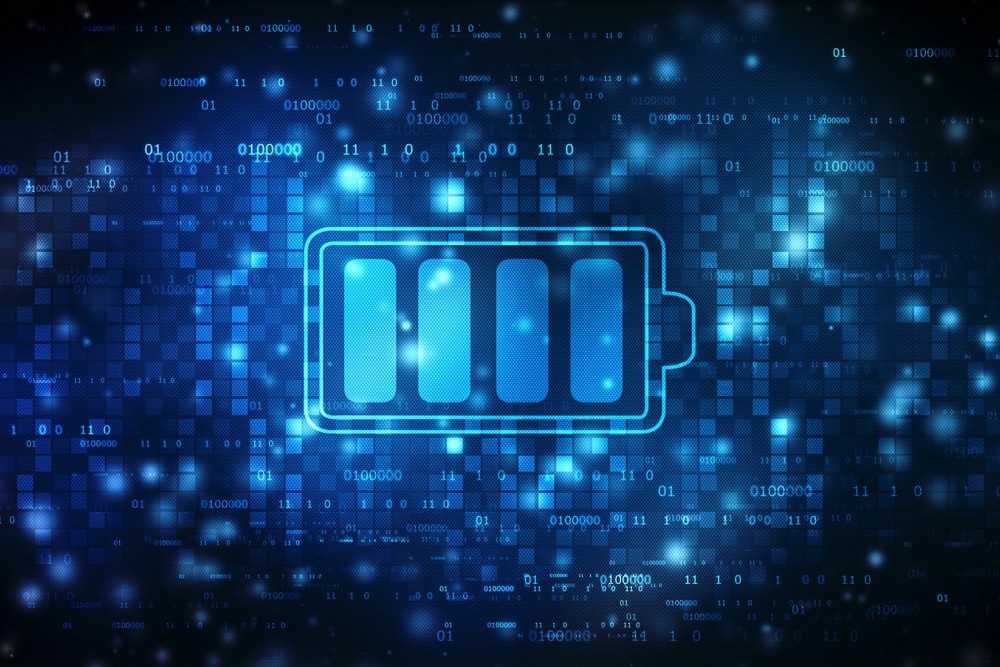Antimony-based substances have good prospects as anode materials in sodium-ion batteries (SIBs) because of their great hypothetical capacity. Unfortunately, the high volumetric growth and limited ion conduction in the electrolytic procedure prevent them from meeting their theoretical capabilities.

Study: Carbon skeleton confined Sb chalcogenides nanodots for stable sodium storage. Image Credit: Blackboard/Shutterstock.com
In a study published in the journal Carbon, H2/C heat reduction, selenization and sulfurization (SAS) of sodium stibogluconate resulted in Sb2Se3@C and Sb2S3@C nanodots with consistent diameters of 20.7 nm and 19 nm, respectively.
Antimony-based Materials for Sodium-Ion Batteries
Many attempts have been made to investigate suitable electrode substances for sodium-ion batteries (SIBs). Because of their increased capacities compared to anode materials based on intercalation, alloying and conversion-based electrode substances have gained popularity.
Antimony-based substances (Sb, SnSb, Sb2Se3, Sb2S3) are possible anode substances for sodium-ion batteries having unique electrolytic mechanisms and significant hypothetical capacities. Owing to their large hypothetical specific capacities, Sb2Se3 and Sb2S3 are particularly appealing options.
Unfortunately, considerable volumetric growth and inadequate ionic conduction in their electrochemical process are the two fundamental issues that cause quick capacity degradation and poor rate performance at high current density.
Sb2Se3 and Sb2S3 are chalcogenides based on antimony with differing anions, resulting in variations in makeup and conduction. Studies of the influence of various anions on the volumetric growth of the electrode morphology, the capacity to attach with sodium ions (Na+) in the charging/discharging phase, and ionic conduction are of particular importance in the development of electrode components for sodium-ion batteries.
Given that both substances have quick capacity degradation and poor rate performance, avoiding failure of the structure and enhancing electrode conductance are considered primary goals.
Addressing the Limitations of Antimony-based Materials
In general, logical structural design and carbon encapsulation are excellent solutions to these critical issues. Using nanoscale materials may reduce ionic diffusion paths and speed up the interchange of electrons and Na+ ions.
During insertion/removal of sodium ions, the composite carbon is advantageous for accelerating electron transport and improving structural integrity. As a result, a range of Sb2Se3@C and Sb2S3@C composites have been investigated for sodium-ion batteries.
Sb2Se3 nanowires, rod-shaped Sb2S3, and Sb2S3@PPy micro-clips have all been documented thus far. While beneficial electrolytic performance has been achieved, the short cyclic life and extensive examination of the relationship between morphology and Na storing efficiency need additional investigation.
A suitable technique for obtaining extended cyclic life has been proposed to be the construction of an interlinked conducting carbon framework outside of the standalone nanodots (NDs).
Analysis Techniques Used in the Study
Power X-ray diffraction (XRD) was used to describe the crystallographic characteristics. The existence of amorphous carbon with sulfur or selenium loading was verified by Raman spectroscopy, and the amount of amorphous carbon was validated by thermogravimetric assessment.
Transmission electron microscopy (TEM) imaging was used to indicate the unique morphological makeup and distribution of particle sizes. The electrolytic capabilities of the two electrodes for sodium-ion batteries were evaluated using galvanostatic charging/discharging experiments. Density functional theory (DFT) computations were performed to further validate on an atomic level the sodium ion storing kinetics.
Important Findings
In this study, the team synthesized Sb2X3 (where X is Se or S) NDs@C from sodium stibogluconate using a complex pyrolytic technique and utilized them as anode components for sodium-ion batteries. Nanodots having particle sizes of around 19-21 nanometers were encased in a conducting carbon framework loaded with selenium or sulfur.
Each Sb2Se3 and Sb2S3 nanodot was covered by a weakly graphitized interlinking carbon matrix, which was then crosslinked to generate a highly conductive framework.
The reversible capacity displayed by the Sb2Se3 NDs@C electrode was about 316 mA h g-1 following 100 cycles at 100 mA g-1 and about 269 mA h g-1 following 200 cycles at 1 A g-1.
The extremely small nanodot architecture, limited shielding of the crosslinked carbon framework, superior electric conductance, and reduced hypothetical volumetric growth throughout the recurring alloying and converting operations all contributed to the improved electrolytic performance.
Density functional theory computations revealed that Sb2Se3 NDs@C has a lower sodium ion diffusion energy threshold, stronger product-carbon bonding, and more vacant energy bands, which should result in more solid sodium ion storing kinetics and rate performance.
Given the ease of manufacturing, good yield, cheap cost, and excellent electrolytic performance, this research may pave the way for developing upscaled multifunction electrodes using Sb-based coordination compounds in zero to three dimensions.
Reference
Yang, L., Liu, M., Xiang, Y., Deng, W., Zou, G., Hou, H., & Ji, X. (2022). Carbon skeleton confined Sb chalcogenides nanodots for stable sodium storage. Carbon. Available at: https://doi.org/10.1016/j.carbon.2022.06.043
Disclaimer: The views expressed here are those of the author expressed in their private capacity and do not necessarily represent the views of AZoM.com Limited T/A AZoNetwork the owner and operator of this website. This disclaimer forms part of the Terms and conditions of use of this website.